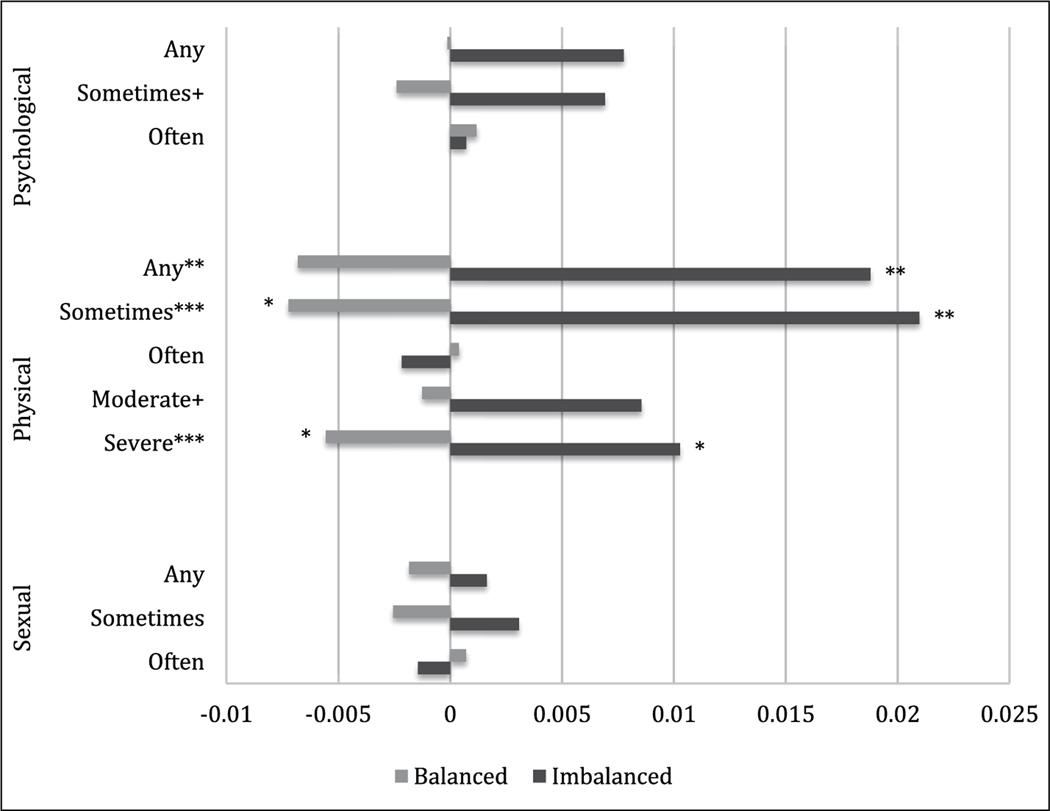Figure 2.
Marginal effects of firstborn daughters (vs. firstborn sons) on the probability, frequency, and severity of intimate partner violence, by (im)balanced SRFB. Note. Marginal effects are calculated from the results of logistic regressions estimating any violence and from multinomial logistic regressions estimating violence frequency (sometimes or often, vs. none) and violence severity (moderate or severe, vs. none). These models include interaction terms between firstborn sex and imbalanced SRFB and between firstborn sex and no education. All models control for respondents’ religion, caste, urban residence, age at first birth, and marital duration at first birth. Significant effects of firstborn sex within each subsample are denoted at the end of each graphed bar. Significant differences in the effects of firstborn sex between the imbalanced and balanced SRFB subsamples are denoted in the horizontal labels on the left-hand side. “Balanced” refers to states with an SRFB > 0.48075. “Imbalanced” refers to states with an SRFB ≤ 0.48075. SRFB = sex ratio of first birth.
†p < .10. *p < .05. **p < .01. ***p < .001 (two-tailed test).

